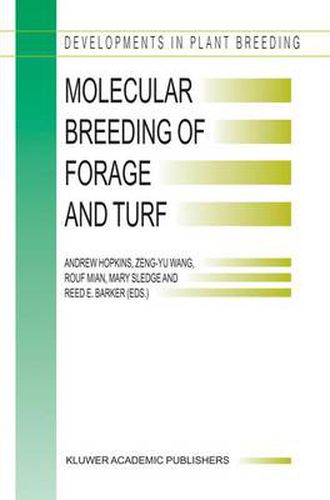Readings Newsletter
Become a Readings Member to make your shopping experience even easier.
Sign in or sign up for free!
You’re not far away from qualifying for FREE standard shipping within Australia
You’ve qualified for FREE standard shipping within Australia
The cart is loading…






Forage and turf are the backbone of sustainable agriculture and contribute extensively to the world economy. The fast-paced advancement of cellular and molecular biology provides novel methods to accelerate or complement conventional breeding efforts. This book contains the most comprehensive reviews on the latest development in applications of molecular techniques for the improvement of forage grasses, forage legumes and turf grasses. Detailed accounts and future opportunities in molecular breeding of forage and turf, from gene discovery to development of improved cultivars, are described in the book. Almost all relevant areas are explored in detail, including tolerance to biotic and abiotic stresses; flowering control; plant-symbiont relations; breeding for animal, human and environmental welfare; molecular markers; transgenics; bioinformatics; population genetics; genomics of the model legume M. truncatula; field testing and risk assessment as well as intellectual property rights. This book will be of interest to researchers in both academia and industry who are involved in forage and turf improvement. It will be especially important to breeders, molecular biologists, geneticists, physiologists and agronomists.
$9.00 standard shipping within Australia
FREE standard shipping within Australia for orders over $100.00
Express & International shipping calculated at checkout
Forage and turf are the backbone of sustainable agriculture and contribute extensively to the world economy. The fast-paced advancement of cellular and molecular biology provides novel methods to accelerate or complement conventional breeding efforts. This book contains the most comprehensive reviews on the latest development in applications of molecular techniques for the improvement of forage grasses, forage legumes and turf grasses. Detailed accounts and future opportunities in molecular breeding of forage and turf, from gene discovery to development of improved cultivars, are described in the book. Almost all relevant areas are explored in detail, including tolerance to biotic and abiotic stresses; flowering control; plant-symbiont relations; breeding for animal, human and environmental welfare; molecular markers; transgenics; bioinformatics; population genetics; genomics of the model legume M. truncatula; field testing and risk assessment as well as intellectual property rights. This book will be of interest to researchers in both academia and industry who are involved in forage and turf improvement. It will be especially important to breeders, molecular biologists, geneticists, physiologists and agronomists.